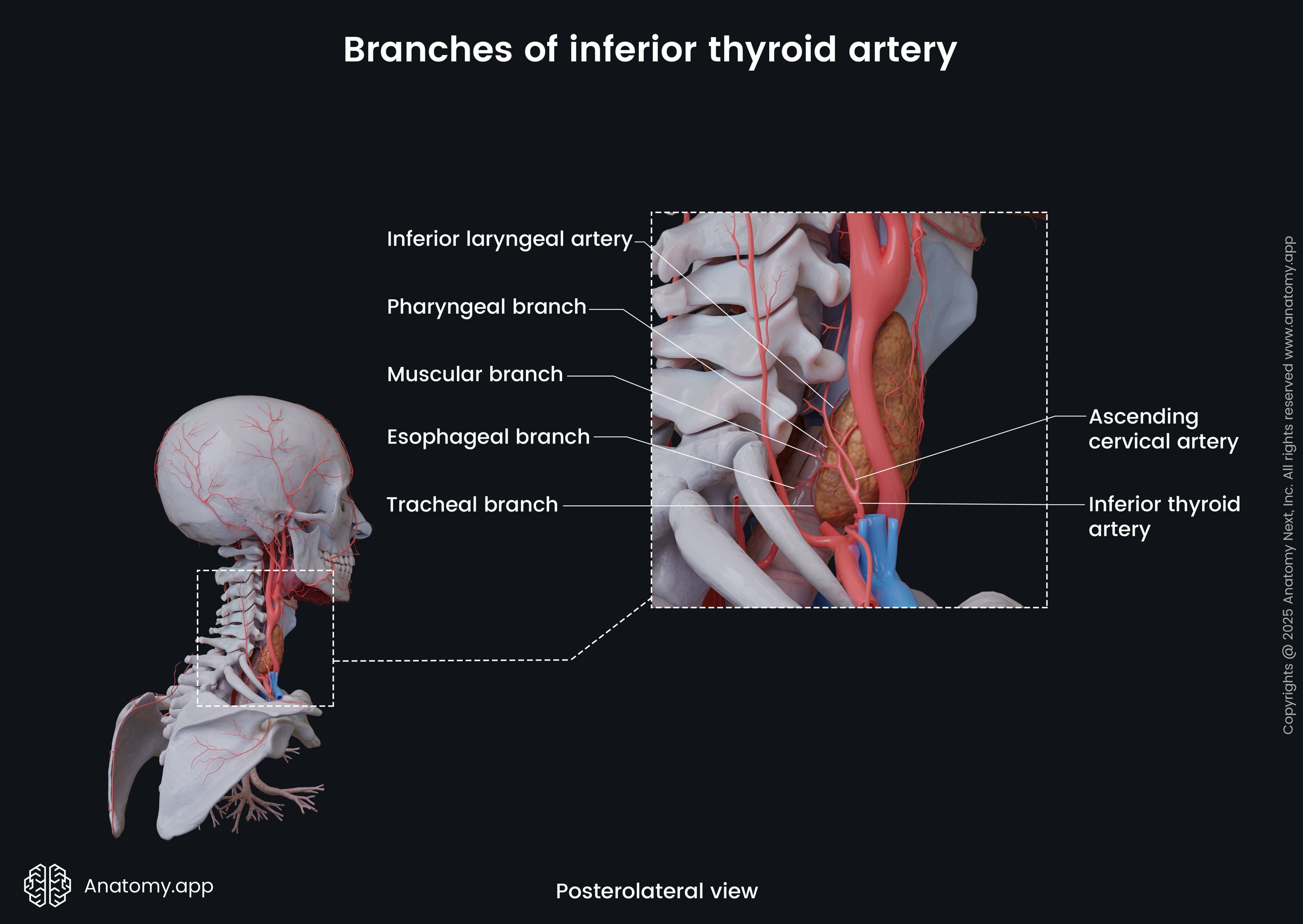- Anatomical terminology
- Skeletal system
- Joints
- Muscles
- Heart
- Blood vessels
- Blood vessels of systemic circulation
- Aorta
- Blood vessels of head and neck
- Arteries of head and neck
- Veins of head and neck
- Blood vessels of upper limb
- Blood vessels of thorax
- Blood vessels of abdomen
- Blood vessels of pelvis and lower limb
- Blood vessels of systemic circulation
- Lymphatic system
- Nervous system
- Respiratory system
- Digestive system
- Urinary system
- Female reproductive system
- Male reproductive system
- Endocrine glands
- Eye
- Ear
Inferior thyroid artery
The inferior thyroid artery (Latin: arteria thyreoidea inferior) is the largest branch of the thyrocervical trunk. It supplies several structures in the neck including the thyroid gland, lateral muscles of the upper neck. This artery also participates in supplying the larynx, pharynx, trachea, and the esophagus.


The inferior thyroid artery passes upwards anterior to the anterior scalene muscle and turns medially behind the carotid sheath. Reaching the base of the thyroid gland, it divides into superior and inferior branches that supply the posterior inferior parts of the thyroid gland. The superior branch of the inferior thyroid artery provides blood to the parathyroid glands as well. It also forms anastomoses with its contralateral fellow artery and with the superior thyroid artery.
The inferior thyroid artery on its course gives off the following branches:
- Muscular branches of inferior thyroid artery - supply the infrahyoid muscles, longus colli, anterior scalene, and the inferior pharyngeal constrictor muscles;
- Ascending cervical artery - often arises from the thyrocervical trunk directly; supplies the lateral muscles of the upper neck, and gives off one or two spinal branches that supply the spinal cord, meninges, and bodies of vertebrae;
- Inferior laryngeal artery - ascends on the surface of the trachea, entering the larynx at the lower border and supplying the laryngeal muscles and mucosa;
- Pharyngeal branches of inferior thyroid artery - supply the lower part of the pharynx;
- Tracheal branches - supply the trachea;
- Esophageal branches - supply the esophagus.

Some thyroid diseases may require a surgery to remove the thyroid (thyroidectomy). As the recurrent laryngeal nerve runs close the inferior thyroid artery, during thyroidectomy the inferior thyroid arteries must be carefully tied off to avoid damage to the nerves.